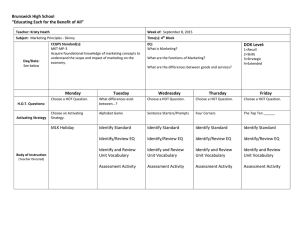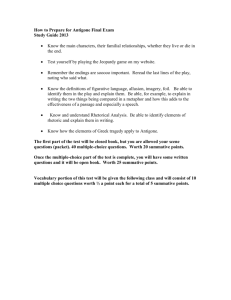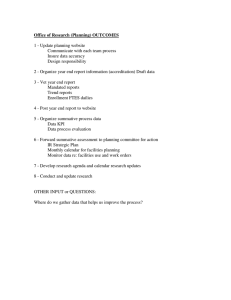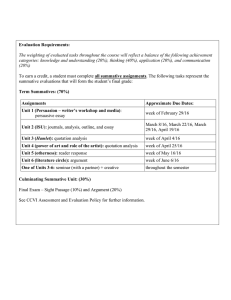Honors World History Final Project
advertisement
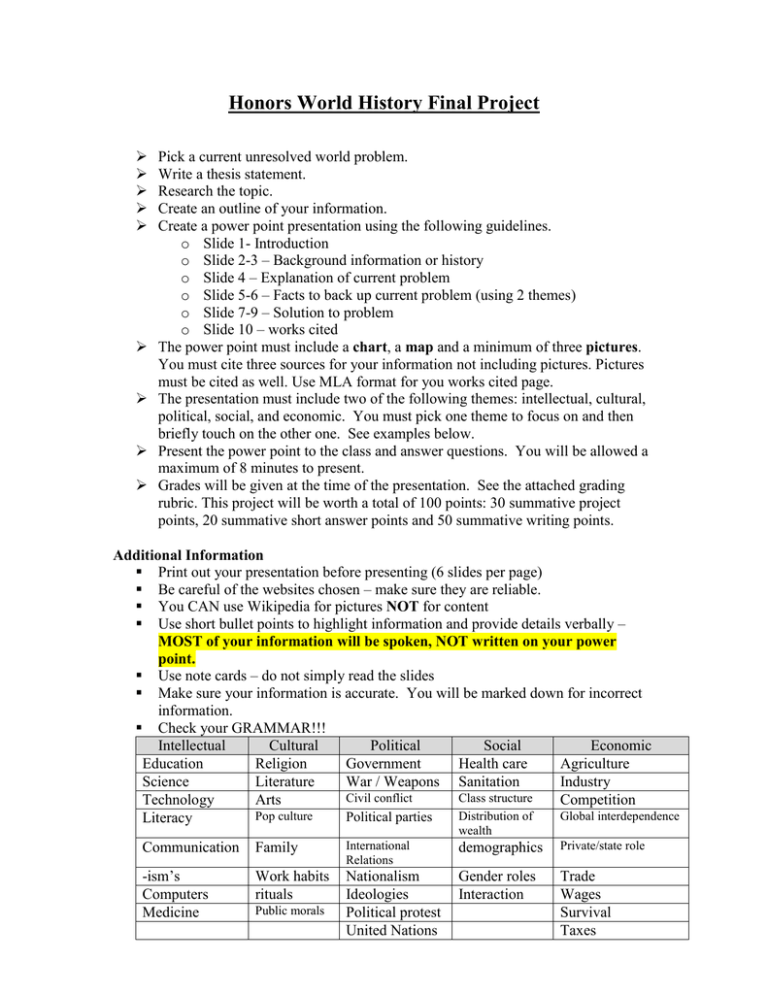
Honors World History Final Project Pick a current unresolved world problem. Write a thesis statement. Research the topic. Create an outline of your information. Create a power point presentation using the following guidelines. o Slide 1- Introduction o Slide 2-3 – Background information or history o Slide 4 – Explanation of current problem o Slide 5-6 – Facts to back up current problem (using 2 themes) o Slide 7-9 – Solution to problem o Slide 10 – works cited The power point must include a chart, a map and a minimum of three pictures. You must cite three sources for your information not including pictures. Pictures must be cited as well. Use MLA format for you works cited page. The presentation must include two of the following themes: intellectual, cultural, political, social, and economic. You must pick one theme to focus on and then briefly touch on the other one. See examples below. Present the power point to the class and answer questions. You will be allowed a maximum of 8 minutes to present. Grades will be given at the time of the presentation. See the attached grading rubric. This project will be worth a total of 100 points: 30 summative project points, 20 summative short answer points and 50 summative writing points. Additional Information Print out your presentation before presenting (6 slides per page) Be careful of the websites chosen – make sure they are reliable. You CAN use Wikipedia for pictures NOT for content Use short bullet points to highlight information and provide details verbally – MOST of your information will be spoken, NOT written on your power point. Use note cards – do not simply read the slides Make sure your information is accurate. You will be marked down for incorrect information. Check your GRAMMAR!!! Intellectual Cultural Political Social Economic Education Religion Government Health care Agriculture Science Literature War / Weapons Sanitation Industry Civil conflict Class structure Technology Arts Competition Pop culture Distribution of Global interdependence Political parties Literacy wealth Communication Family International Relations demographics Private/state role -ism’s Computers Medicine Work habits rituals Nationalism Ideologies Political protest United Nations Gender roles Interaction Trade Wages Survival Taxes Public morals

